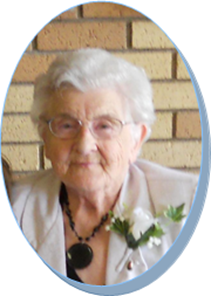The following article was written by Helen Rice Nolden for The Valley Star, Velva November 13, 1996 Article by Helen Rice Nolden in The Valley Star. With fall settling in and winter around the corner, it made me think of the days of the kitchen range and the coal heater. They were the two major heating sources of the so-called “good old days”. It was all we had, so it must have been good. Some of the heaters weren’t too heavy to move, such as the pot-bellied or the wood burning stoves. One, referred to as the hard coal heater, was clumsy to handle and required some strong muscle to move in or out. It was a job just to get it centered on its metal mat. Most people would move the heater into a back porch or a lean-to in the springtime. We just took the stove pipes down and moved the heater against the wall in the living room. Back then, the living room was called a parlor, sitting room, or front room. Although I knew we needed the heater for warmth in the winter, I hated to see them set up the darn thing. There was the cleaning of the nasty, sooty pipes, then getting the stove situated in the exact position so the pipes fit into the stove and the chimney hole in the wall. The heater had to be set away from the wall, so it would take up a bit more room. I guess we all helped in carrying out the ashes-another messy job. I think the boys in our family did most of that. They also brought in the coal for the stoves from our old shed. It was always a cold and wild chore to get the buckets of coal over the snow banks into our back porch. You had to remember to bring in little chunks of coal, then bigger ones to burn during the night. Hard coal was a much hotter and slower burning coal than the lignite. It was shipped from the east, so with the freight charges, it cost a lot more than the soft coal. A lot of the stoves had nickel-plated trim on them. There was nickel on the legs, up the sides, on top, and even on the footrest of the heater. It was always so nice to put your feet up on this little piece of metal after doing some cold chore outside. The coal heaters had icing glass windows on the door where the coal went In. When you walked into the room when the lights were out, the orange-red glow of the embers through the little windows gave you a warm feeling. You had to be careful when you opened the door to put more coal in, as sometimes sparks would fly out. Our kitchen range was never moved back, as we used it in all seasons, because, even though it would get very hot in the summer, we needed the range to cook and bake. It was a mixed feeling when Mom baked bread. She would stoke up the range, making it very hot in the kitchen, but when we got a whiff of the bread baking, we forgot about the heat. Our range had a sturdy oven door, and it was great to come downstairs on a chilly winter morning and sit on the oven door while waiting for breakfast. Sure felt good on the back. We always brought our rocks downstairs in the mornings to put in the oven so they would be nice and hot when we were ready for bed. They were our foot warmers, which we wrapped in an old piece of flannel and stuck at the foot-end of our beds. Some people used bricks as foot warmers and some used the old clothes irons. We used rocks about the size of a soft ball or kitten ball. The kitchen range had a reservoir, which was a good source of warm water, other than the hot water from the tea kettle which stayed on the stove 24 hours a day. The reservoir held about five gallons of water. The water never got really hot-just right for washing face and hands in the early morning. Most ranges had a warming oven that ran the full length of the stove at the top. Sometimes it was used to store extra pots and pans, but for the most part, it was used to keep food warm, as its name suggests. When Mom made pancakes or French toast, it was kept warm until we were all ready and seated at the table. I’ve always wondered how the women of those days could keep the temperature in the oven just right for whatever it was they were baking. They also had to know how to build a fire using kindling wood, bigger pieces, etc. We had old ties that had been sawed, chopped and stacked neatly in the old shed, and if we were out for a walk, we always picked up tree branches or laths to add to the pile of wood. I can almost hear the crackling of the wood in those old stoves. I miss some of that, but I don’t think I would care to go back to it again.
|
